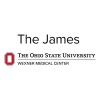
T Cell Receptor Immunotherapy for Patients With Metastatic Non-Small Cell Lung Cancer
Advanced Non-Small Cell Lung CancerSquamous Cell Carcinoma3 moreBackground: The NCI Surgery Branch has developed an experimental therapy that involves taking white blood cells from patients' tumors, growing them in the laboratory in large numbers, and then giving the cells back to the patient. These cells are called Tumor Infiltrating Lymphocytes, or TIL and we have given this type of treatment to over 100 patients. In this study, we are selecting a specific subset of white blood cells from the tumor that we think are the most effective in fighting tumors and will use only these cells in making the tumor fighting cells. Objective: The purpose of this study is to see if these specifically selected tumor fighting cells can cause non-small cell lung cancer (NSCLC) tumors to shrink and to see if this treatment is safe. Eligibility: - Adults age 18-72 with NSCLC who have a tumor that can be safely removed. Design: Work up stage: Patients will be seen as an outpatient at the NIH clinical Center and undergo a history and physical examination, scans, x-rays, lab tests, and other tests as needed Surgery: If the patients meet all of the requirements for the study they will undergo surgery to remove a tumor that can be used to grow the TIL product. Leukapheresis: Patients may undergo leukapheresis to obtain additional white blood cells. {Leukapheresis is a common procedure, which removes only the white blood cells from the patient.} Treatment: Once their cells have grown, the patients will be admitted to the hospital for the conditioning chemotherapy, the TIL cells and aldesleukin. They will stay in the hospital for about 4 weeks for the treatment. Follow up: Patients will return to the clinic for a physical exam, review of side effects, lab tests, and scans about every 1-3 months for the first year, and then every 6 months to 1 year as long as their tumors are shrinking. Follow up visits take up to 2 days.

Long-term Effect of an Health Education Program on Daily Physical Activity in Patients With Moderate...
Chronic Obstructive Pulmonary DiseaseMain objective: To compare the level of physical activity (PAL) at 12 months in patients with moderate to very severe chronic obstructive pulmonary disease (COPD) between those who completed a health education program and those who did not. Study patients. Subjects older than 35 years; diagnosis of moderate to very severe COPD (FEV1 <80% predicted), established at least 3 months; current or former smoker with an accumulated consumption >10 packs x year; and hospital admission for COPD exacerbation. Design. Randomized, parallel and open-label clinical trial, controlled with conventional treatment. Intervention: During hospitalization, selected patients will receive conventional treatment. At discharge, they will be randomized (1:1) to control group [treatment and follow-up according to conventional clinical practice] or intervention group [in addition to conventional treatment and follow-up, the patients will be referred to a nursing consultation for perform two health education sessions, at 15 and 30 days after hospital discharge]. Measurements. At 15 days and 12 months after discharge, the following determinations will be made: anthropometric characteristics; clinical evaluation (smoking history, date of COPD diagnosis, comorbidities, current medication; health care utilization; moderate or severe COPD exacerbations); questionnaires (mMRC, Charlson, COPD-specific co-morbidity test (COTE), COPD Assessment Test (CAT) and LCADL), spirometry and six-minutes walking test; and evaluation of daily physical activity using an accelerometer.

Exercise and Respiratory Therapy in Patients With Rheumatoid Arthritis / Collagenosis and Pulmonary...
Pulmonary HypertensionConnective Tissue DiseaseIn Patients with rheumatic disease exercise training is a well established element of therapy. In contrast patients with severe pulmonary hypertension are advised to avoid physical exertion and must not perform exercise training. This study aims to evaluate the effectivity and safety of a low-dose training program in patients with pulmonary hypertension and rheumatic disease.

Transoral Robotic Surgery in Treating Patients With Benign or Malignant Tumors of the Head and Neck...
Recurrent Adenoid Cystic Carcinoma of the Oral CavityRecurrent Mucoepidermoid Carcinoma of the Oral Cavity49 moreThis pilot clinical trial studies transoral robotic surgery (TORS) in treating patients with benign or malignant tumors of the head and neck. TORS is a less invasive type of surgery for head and neck cancer and may have fewer side effects and improve recovery

Study Evaluating Safety, Tolerability and Pharmacokinetics (PK) of Tarlatamab in Adults With Small...
Small Cell Lung CarcinomaA study to assess the safety, tolerability, and PK of tarlatamab in participants with SCLC

Inhibition of CArbonic Anhydrase in Combination With Platinum and Etoposide-based Radiochemotherapy...
Small Cell Lung CancerThe investigators propose to study the carbonic anhydrase inhibition (acetazolamide) associated with concomitant radiochemotherapy in localized small cell lung cancer due to: The over-expression of carbonic anhydrases in this type of cancer, The Anti-tumor effect in preclinical acetazolamide in various tumor lines including neuroendocrine tumor lines, The observed synergy between irradiation and inhibition of carbonic anhydrases, Potential anti-tumor immune effect caused by decreased extracellular acidity.

Treatment With the Anti-IgE Monoclonal Antibody Omalizumab in Women With Asthma Undergoing Fertility...
AsthmaInfertility1 moreThe investigators have previously confirmed a clinical hunch that women with asthma have difficulties in becoming pregnant. The investigators found increased time to pregnancy (TTP) in women with asthma compared to non-asthmatic women (55 vs 33 months, p<0.001), furthermore, women with asthma had less successful pregnancies following fertility treatment (39.6 vs 60.4%, p=0.002). Treatment with omalizumab stabilizes the eosinophilic disease, through the systemic and most likely the anti-inflammatory pathways, which indicate a promising possibility to increase pregnancy rate. In a small real-life study in 2017, 5 patients with eosinophilic asthma who underwent in vitro fertilization (IVF), were treated with omalizumab prior to embryo transplantation; three out of the five women became pregnant. Lastly, the two remaining patients had several treatments with omalizumab, but did not become pregnant. This real-life study calls for further investigation. By targeting systemic inflammation with omalizumab treatment the aim is to increase asthma control before and during pregnancy. A treatment strategy aiming at improving overall inflammatory control may increase fertility, but also reduce well known maternal and perinatal adverse pregnancy outcomes such as pregnancy loss, preeclampsia, gestational diabetes, low-birth weight, small for gestational age (SGA), preterm delivery. Study design: A randomized control trial with omalizumab and placebo, stratified for blood eosinophil count, is therefore needed. A randomized, double blinded, parallel group, study to evaluate the difference between omalizumab (O) and placebo (P) on pregnancy rate in patients with atopic asthma.Treatment schedule: After collection of material (blood samples, sputum, secretion of the vagina, secretion of the rectum, microbiota) 6th day (±1 day) of the menstrual cycle, the patients will be randomized in either the omalizumab group or the placebo group. No collection of material will be done at the time of enrollment, as this will be on different time of the female cycles. The treatment is initiated with one injection with weight and serum-immunglobulin E balanced omalizumab or one injection placebo. After omalizumab treatment at ovulation it will again be collected material (blood samples, sputum, secretion of the vagina, secretion of the rectum, secretion of the uterus, microbiota). If no pregnancy has occurred after first IVF cycle, this will be repeated for 3 consecutive IVF cycles in total or until pregnancy has occurred. Outcome: The primary out-come is efficacy of omalizumab, compared to placebo, in increasing pregnancy rate in females with asthma. Secondary out-comes are changes in the inflammation in lungs/systemic/uterus, change in microbiota in the uterus and lungs, pregnancy loss, asthma control and biomarkers in the blood/lungs/uterus.

Hydroxychloroquin (HCQ) in chILD of Genetic Defect
Surfactant DysfunctionThe purpose of this proposed research is to investigate the efficacy and safety of hydroxychloroquine sulfate (HCQ, Quensyl) for pediatric ILD(chILD) caused by pulmonary surfactant-associated genes mutations.

Partitioned Training of Patients With Idiopathic Pulmonary Fibrosis
Lung; DiseaseInterstitial1 moreIdiopathic pulmonary fibrosis (IPF) is a lung disease that limits the ability to breathe enough for a good workout. One way to improve the exercise training is to reduce the number of muscles being trained together. By training one leg at a time, the patient does not have to breathe as much allowing each leg a better workout. Our groundwork suggests it may work in patients with IPF. This study will help decide whether one-legged exercise training is better at improving a patient's exercise endurance compared to the usual way of exercising with both legs at the same time.

High Intensity Interval Training in Fibrotic Interstitial Lung Disease
Fibrotic Interstitial Lung DiseaseThe fibrotic interstitial lung diseases (fILD) is a group of debilitating chronic lung conditions that are characterised by scarring of lung tissue, dyspnoea on exertion and significant physical impairment. Exercise training is recommended for people with fILD in improving breathlessness and exercise tolerance. However, despite the best efforts of patients and clinicians, many of those who participate are not attaining its benefits. The current exercise training strategies of moderate intensity continuous training may not be well suited to fILD. High intensity interval training (HIIT), short bouts of high-intensity exercise regularly interspersed with periods of rest or light exercise may be an alternate exercise training option for people with fILD. The study will determine to whether HIIT is better than the current method of continuous exercise training at moderate intensity in improving exercise tolerance, breathlessness and quality of life in people with fILD. A randomised controlled, assessor blinded trial will be conducted. A total 130 people with fILD will be randomly assigned to moderate intensity continuous training or HIIT. If this trial demonstrates that HIIT is effective, it will provide an exercise training strategy that can readily be implemented in practice that will maximise the outcomes of exercise training for people with fILD.
